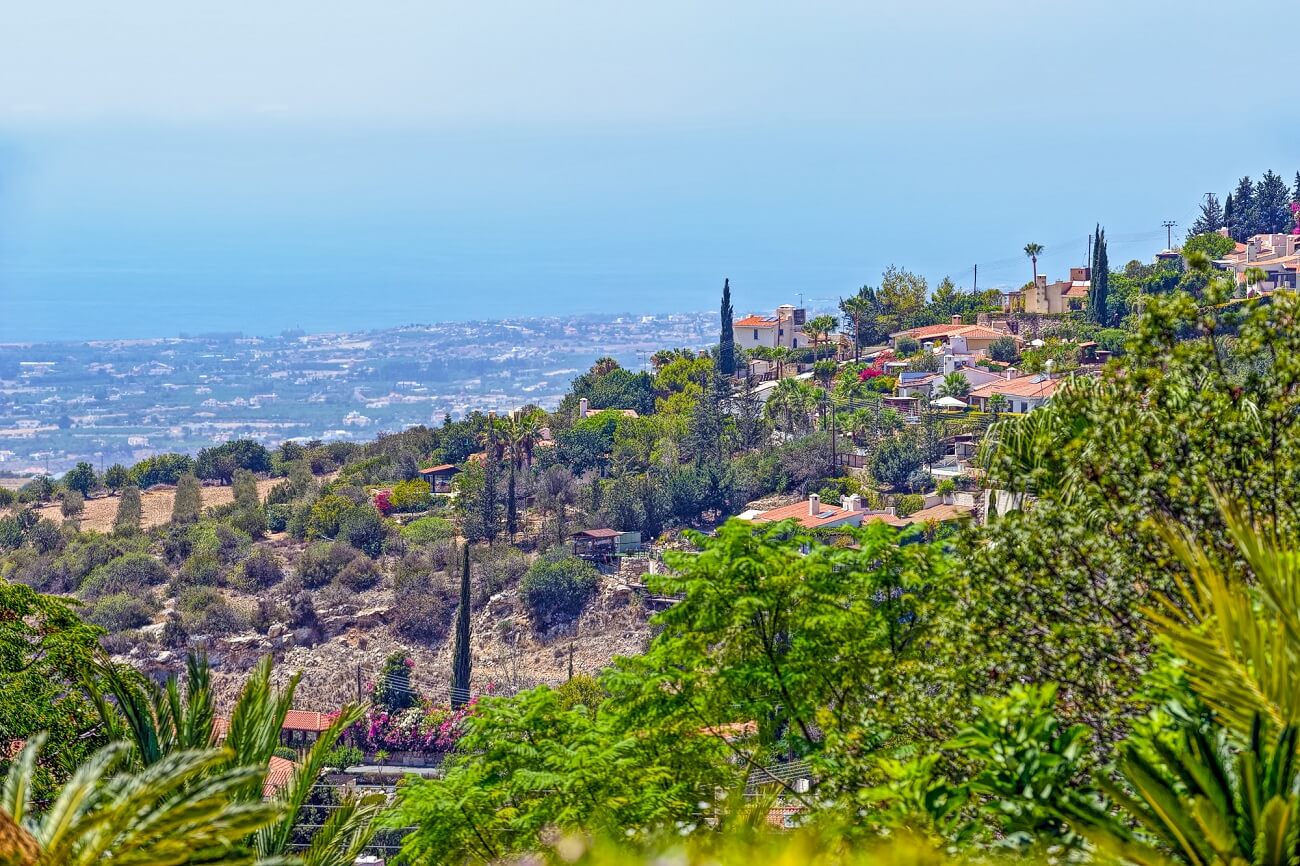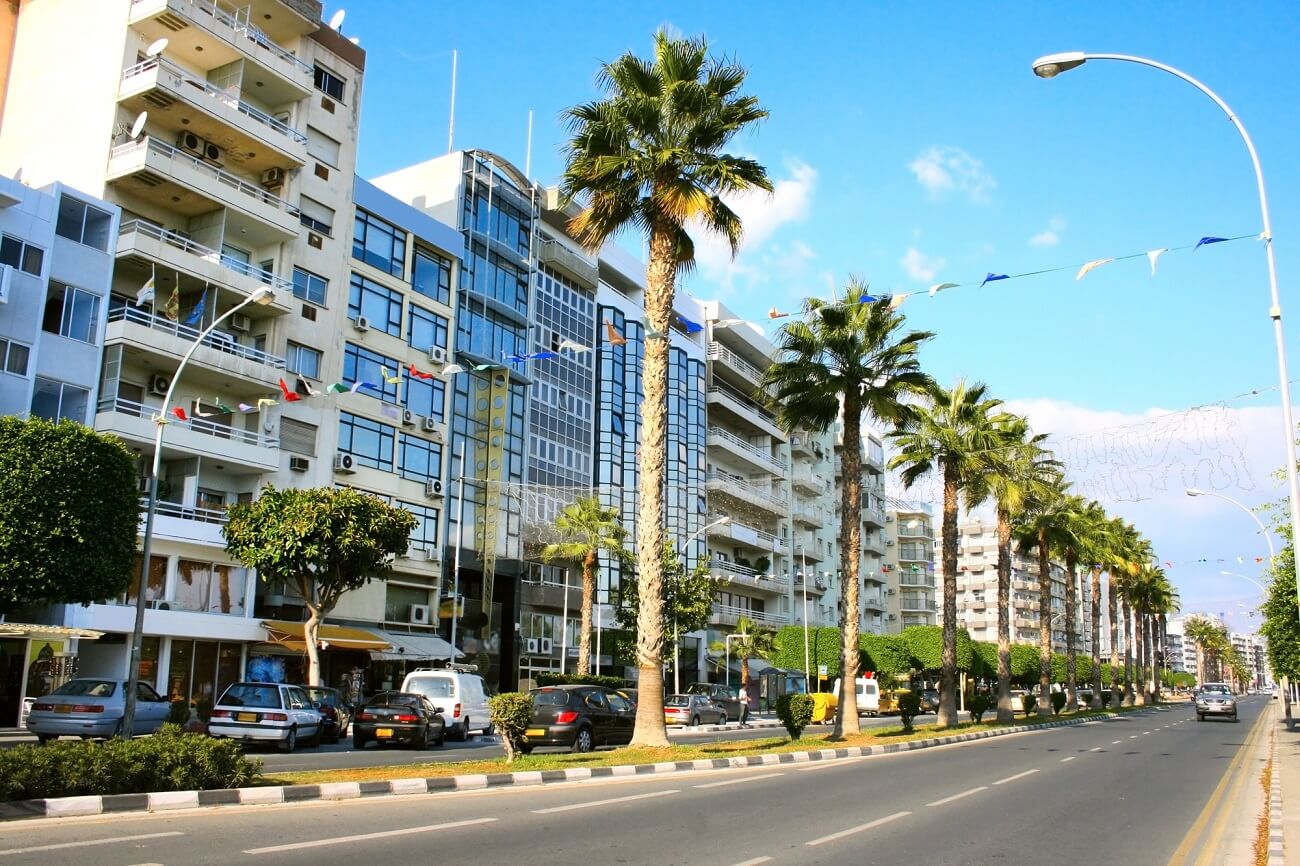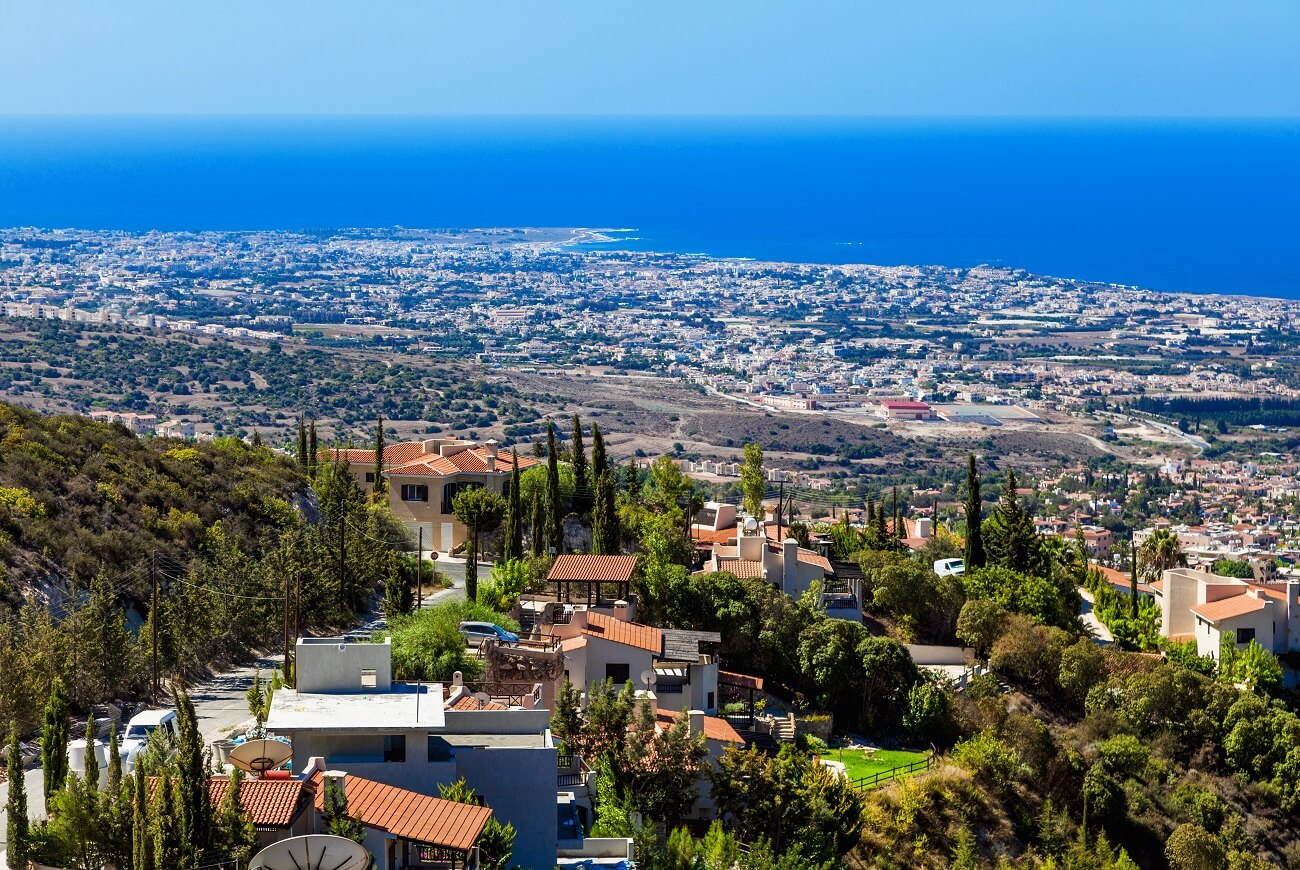

Cyprus is a picturesque region with incredible cultural contrasts and stunning coastlines. Its history is reflected in ancient architecture, and natural landscapes fascinate with beauty. There are a lot of places worth visiting here. It is simply impossible to capture all the best in Cyprus in 7 days. So, if you only have a week, don't waste your time. If you choose an active week in Cyprus, check out the list of attractions that are unforgivable to ignore in advance.
Traveling around Cyprus will be more intense and mobile if you rent a car for trips, which is a well-developed practice on the island. International and local car rental companies can be found both at airports and in city centers.
It is most convenient to run through the best places in Cyprus from the southwest to the southeast. Let's start with the resort of Paphos and its environs. This will be the best start as Paphos has an international airport.
Paphos-Polis-Pissouri-Limassol-Lefkara-Nicosia-Kyrenia-Famagusta-Protaras-Ayia-Napa-Larnaca route, you can quickly get to know Cyprus in just one week.

Day 1 .What to see in Paphos
For many, Paphos is associated with the goddess of love and beauty, Aphrodite. There are several popular natural sites in the vicinity - the Rock of Aphrodite, the ruins of the Sanctuary of Aphrodite in the village of Kouklia, the Fountain of Love in Latchi and the Baths of Aphrodite on the Akamas Peninsula. Closer to the center:
- Archaeological park. The main historical site of Paphos. The open-air ruins museum was created among the grandiose excavations of the old city, begun in the middle of the 20th century. People come here to see the preserved mosaics of the Roman period, the ruins of a medieval fortress, as well as the remains of buildings of the 2nd century AD. The ancient odeon is especially impressive. The territory of the park is under the protection of UNESCO.
- Royal Tombs. There is a unique old place with an incredible atmosphere 2 kilometers northwest of the park. The royal tombs are an ancient underground necropolis carved into the rock, with luxurious burials for that period. It was active until the 3rd century AD.
- Central embankment and Medieval castle. Below the Archaeological Park opens the picturesque harbor of Paphos with a medieval fortress on the west coast. The promenade along the main promenade with cafes and restaurants should definitely be combined with a tour of Paphos Castle, founded in the 13th century.

Depositphotos
Day 2. Polis and surroundings
There are many impressive locations in the west of Cyprus, including the famous Coral Bay and the protected Akamas Peninsula. After driving about 50 kilometers north of Paphos, you will discover the stunning natural places of Cyprus.
Polis is a calm and beautiful fishing town for connoisseurs of green landscapes on the seashore. There are many hotels and clean beaches. Hiking and cycling trails reveal authentic architecture, traditional villages, old churches and green gardens. The walk along the coast is especially impressive.
One of the central places to visit in Polis is the baths of Aphrodite, located at Chrysochou Bay in the Akamas National Park. The nature protection park itself includes several more sights, which are visited by thousands of tourists every year. Even on the Akamas auto reserve, you will need a whole day to visit. On the way to it, look into the authentic village of Latchi, where you can have a bite to eat in a traditional tavern.

Depositphotos
Pissouri and Aphrodite's Stone
40 kilometers southeast of the Paphos waterfront is the small village of Pissouri, with a stunning waterfront, interesting natural and architectural locations. If heading to Limassol, this place will be on the way. Arriving in Pissouri, you will be surprised by the gentle beauty of the town. In its center you can see the ancient church of Apostol Andreas, built in 1883. There is another authentic temple on the hillside near Pissouri - the church of Agios Mavrikios.
On the Pathos-Pissouri road, near the village of Kouklia , there is an interesting natural object - the rock of Aphrodite. This is a huge stone on the coast in the bay of the same name. The place where, according to legend, the goddess of Love was born.

Depositphotos
Day 3. The main attractions of Limassol
The next city of old sights and picturesque coasts is Limassol. A picturesque 40-kilometer road leads to it from Pissouri in an easterly direction. This is the second capital of Cyprus, a major port, cultural and business center. Tourism in Limassol is also well developed.
- Ancient ruins of Kourion and Amathus. The main historical asset of Limassol is the ruins of Kourion and Amathus, ancient cities surrounding the modern policy from the west and east, at a distance of 15-17 kilometers from the center. Archaeological parks are open here, where you can wander endlessly.
- Sanctuary of Apollo. Not far from Kourion there is another ancient treasure - the Sanctuary of Apollo. In this place you will see many remains of ancient walls. A visit to the ruins will be much more interesting in the company of a tour guide who will enlighten you on historical events and share old legends.
- Castle of Limassol. At the old port of Limassol, in a powerful fortress, there is the Museum of the Middle Ages with interesting artifacts from ancient times to the 17th century. The castle itself dates back to the 14th century. This is a striking example of the Ottoman architecture of Cyprus, from which it is worth starting your acquaintance with Limassol. A walk through the premises of the castle-museum with medieval objects will leave an indelible impression. Interesting artefacts are also exhibited in the courtyard.

Depositphotos
Lefkara village
After exploring the southern coast, you can choose a route towards the capital of Cyprus. A must with a stop in one of the most beautiful villages on the island. Pano Lefkara is located 50 kilometers northeast of Limassol, past Pyrgos and Kalavasos. This is an incredibly colorful place where every lane breathes history. The village is famous for the unique handicrafts owned by the locals. Here they create incredible handmade lace and silverware, which have long been known outside of Cyprus. Cozy taverns, narrow cobbled streets and old churches. In Lefkara there is a picturesque hiking trail that can be walked around slowly in 1.5-2 hours.
How to get from Limassol: turn left from the main highway A 1 near the village of Skarinou.

Depositphotos
Day 4. See the capital of Cyprus
60 kilometers due north of Pano Lefkara and you find yourself in the main city of Cyprus - Nicosia. The capital of the island has an ancient history, which began in the 7th century BC. Today it is the cultural and educational center of Cyprus with one interesting feature. Right in the middle of the city is the state border between the Republic of Cyprus and the TRNC (Turkish Republic of Northern Cyprus). Only in Nicosia can you cross the border checkpoint and end up in another state.
The densely populated capital is full of incredible cultural contrasts. Here it is worth taking a break, renting a room in one of the many hotels, and again on the road to the best Cypriot places. Several architectural monuments and museums in Nicosia are worthy of close attention.
- Archaeological Museum. Contains the largest collection of antiquities on the island and worldwide. In total, the museum has 14 rooms with expositions from the time of the birth of civilization in Cyprus to the ancient Roman period. Walk among the amazing works of art from past eras.
- Archbishop's Palace. A whole historical complex of religious significance. The Archbishop's Palace includes two popular museums of the capital - Byzantine and Ethnographic, a unique art gallery with works by Western European masters of painting of the 15th-19th centuries, as well as a cathedral of the 17th century, which preserves valuable religious paraphernalia.
- Tripiotis. The second name is the Church of the Archangel Michael. This is one of the central objects of religious architecture in Nicosia. The temple was built in 1695 and is located in the center of the historical part of Nicosia. Visiting the old church, you can see the 15th century icon of the Madonna and Child. Outside, the strict Byzantine church is distinguished by rich interior decoration.
- Ledra street. The main shopping street of the capital, walking along which you can feel the unusual flavor of the place. Here is the border line. Once on Ledra, you can simultaneously visit two countries with their own culture and atmosphere. The old street is strewn with shops, cafes and restaurants. A great place for shopping and exploring the Cypriot capital.
At the end of Ledra Street is a round-the-clock checkpoint to the Turkish part of Nicosia. To cross, you need to have a passport with you.
- Buyuk Khan. Medieval caravanserai on the Turkish side of the center of Nicosia, which over the centuries has become an architectural heritage of the capital. Buyuk Khan was built in 1572, during the reign of the Ottoman Empire in Cyprus. Today it is a beautiful complex of buildings in the old Turkish style, with shops, galleries, handicraft workshops and cozy cafes. It is an integral part of the tourism program. The caravanserai often hosts performances of the local shadow theater. Here you can take unusual photos and buy handmade souvenirs.
- Selimiye Mosque. The majestic cathedral, the construction of which was completed in 1325. With the change of authorities and religions, the appearance of the old temple also changed. Once it was a Roman Catholic cathedral with Gothic vaults. Today Selimiye is the main mosque of Turkish Cyprus and a significant monument of Venetian architecture at the same time.

Depositphotos
Day 5. Kyrenia
The next city of Cyprus worth visiting is located in the very north of the island, 29 kilometers from Nicosia. Kyrenia (Girne) is a beautiful port city surrounded by mountains. There are almost no high-rise buildings here, but only incredible nature with olive groves and golden coasts. Girne is called the pearl of Northern Cyprus. Particularly pleasing to the eye are the views of the old port and the mountains in the sunset. To learn more about the northern city, visit the main attractions - the medieval fortress and the beautiful promenade of the old harbor, where you can find a great place to eat.
Kyrenia fortress. This is the first and main historical object of Kyrenia. The majestic castle of the 16th century is located in the eastern part of the old port. Inside you can see not only medieval walls and an underground dungeon, but also a collection of weapons. On the territory of the fortress there is a 12th century chapel and an interesting Shipwreck Museum. No matter how much time you allocate to Kyrenia, the fortress is an obligatory part of the travel program.

Depositphotos
Famagusta: what to look for
It is worth continuing the journey through Northern Cyprus through the second, no less significant city of Turkish Cyprus - Famagusta. It is located on the east coast, 80 kilometers from Kyrenia. Before the unfortunate events of the partition of Cyprus, Famagusta was a thriving tourist destination with incredible golden beaches. In the current conditions, tourists are interested in some architectural monuments and ancient ruins. The historical quarter of Varosha, where thousands of tourists annually rested before the Turkish invasion, today is only partially open for inspection. On its territory there is a huge number of once in demand, but now abandoned hotels, and empty, clean beaches.
- Bastion Martinengo. A huge fortified structure with powerful walls up to 6 meters thick, built on the highest point of the city. The bastion of Martinengo (Tophane) was built from 1558 to 1562. This is one of the most striking examples of the military architecture of the Venetian period in Cyprus. From the observation deck offers views of the whole of Famagusta and the surrounding area. The bastion is located near the harbor of Famagusta.
- Fortress of Famagusta. The old fortress, founded in the early 13th century, is called Othello's Castle or Othello's Tower in tourist booklets. This is connected with the story of the jealous Venetian commandant of the fortress. The main purpose of the fortress was to protect the inhabitants of the city from raids. Powerful walls reached 15 meters in height and 6 in width. The fortress is located in the northeastern part of historical Famagusta. Walking inside the medieval walls, you will see many traces of history and architectural sights.
The road from Famagusta to the south, towards Protaras, passes along the picturesque coasts, with a checkpoint in the village of Derynia. By the way, in this picturesque place you can linger for a while. There are several worthy objects in Derynia - the old churches of the Byzantine era, the Cultural Center, the Ethnographic Museum and the Municipal Park.

Depositphotos
Day 6. Protaras and Ayia Napa
The two neighboring resorts most in demand in Cyprus among beach lovers in the summer season are Protaras and Ayia Napa. Modern embankments with luxury hotels, markets, restaurants and souvenir shops stretch along the coasts. In the summer season, there are always a lot of tourists in the main resorts of southern Cyprus.
Protaras
To the resort town from the center of Famagusta - 22 kilometers, through the beautiful tourist area Pernera. The southeastern coasts of these places are incredibly clean, for which they are marked with the Blue Flag. Among the most picturesque - Pernera, Sunrise, Konnos Beach and Fig tree beach. Along the coast, on the way to Ayia Napa, the famous Cape Greco opens up, one of the most beautiful natural places in Cyprus.
There are not many attractions in Protaras, but there are still several interesting locations:
- Historical Museum, with collections of antiquities from antiquity. Particularly impressive are the collections of vehicles and children's toys.
- Protaras Oceanarium, which contains more than a thousand species of fish.
.jpg)
Depositphotos
Ayia Napa
From Cape Greco to the center of Ayia Napa, only about 10 kilometers along the east coast. If you want to feel the atmosphere of a youth resort, it is all concentrated in Ayia Napa, which is called the second Ibiza. There are more hotels, clubs and restaurants here than anywhere else on the island. In addition, the resort is known for a record number of Blue Flag beaches, Nissi being the most popular among them. Beach and Makronisos beach.
In the vicinity of Ayia Napa, on the way to Larnaca, do not miss the ancient Ayia Thekla chapel on the beach of the same name.

Depositphotos
Day 7. Larnaca
From Ayia Napa to Larnaca, about 50 kilometers of a scenic route. This is the third largest city in Cyprus, after Limassol and Nicosia. Next to it is the main international airport of Cyprus. Larnaca is a great resort for families. It is characterized by shallow beaches with warm water and good entertainment infrastructure. The oldest Cypriot city, of course, has enough interesting places and architectural monuments that every tourist needs to have time to see.
- Archaeological Museum. This is one of the main museums of its kind on the island. It contains a unique collection of antiquities found on the territory of the ancient city of Kition, where Larnaca stands today, and in the vicinity.
- Museum of Pieridis. One of the oldest private museums in Cyprus. Over the course of two centuries, his collection included art and household items, furniture, weapons and jewelry from various historical eras.
- Larnaca Castle and Historical Museum. The old fortress near the Finikoudes promenade dates back to the Ottoman period in Cyprus. The castle buildings are perfectly preserved, so you can feel the atmosphere of that time here. The second floor of the building is occupied by the Larnaca Historical Museum, which preserves ancient frescoes and early Christian exhibits.
- Church of Saint Lazarus. The main religious monument on the territory of Larnaca, founded in 898.

Depositphotos
More articles
- Best Bali Hotels Adults Only
- The best hotels in Bali for family holidays
- The best family hotels in Seychelles
- Java Island on your own - where to go and the main tips
- Top 5 Sustainable Tourism Destinations in Indonesia
- Holidays in Bali: top 22 things to do on the island
- Nyepi in Bali - New Year or Day of Silence
- Rains in Bali: pros and cons of the wet season
- Hotels of Ayana complex in Bali
- Gunung Batur: how to get to the main volcano in Bali



